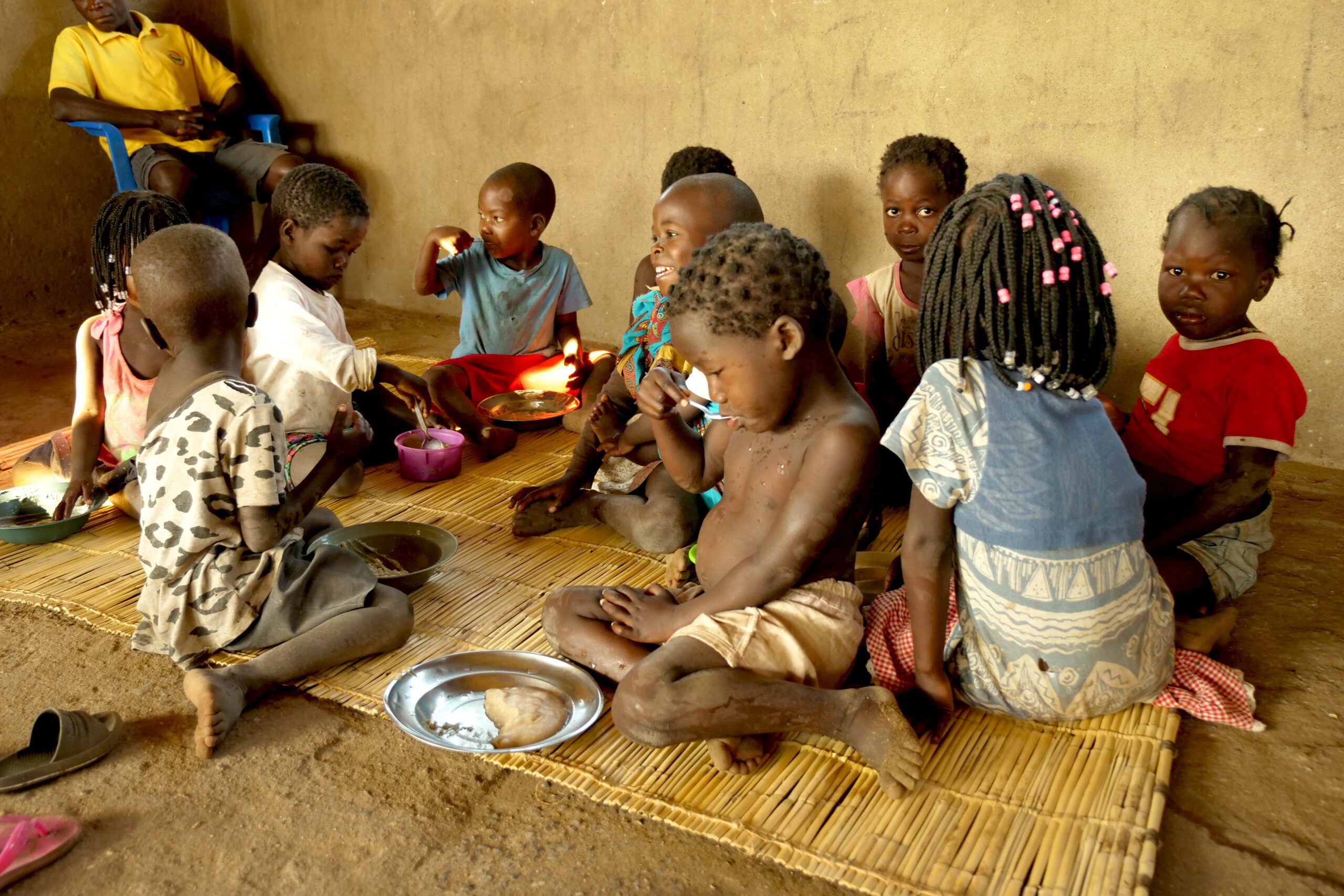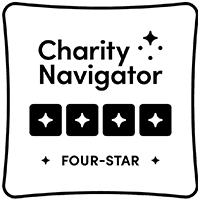
Nourishing Children for Life in Mozambique
Editor’s Note: Since we produced this story about our Linking Agriculture and Nutrition program in Mozambique, which is funded with UK aid from the UK government and carried out in partnership with the prime implementer, Save the Children, the Mozambique government has reported confirmed cases of COVID-19 and declared a national state of emergency.
We are adapting our interventions to respond to the COVID-19 crisis, while sustaining core elements of our existing programs. For example, we are developing COVID-19 prevention, hygiene, and sanitation messages for radio broadcast; improving access to safe water and latrines; and supporting seed distributions and additional agricultural training for at-risk households.
Linking Agriculture and Nutrition for Better Health
Bento Franque, Rosa Mairosse, Victor Toalha, and Linda Joss are typical residents of Carata, a rural village in Tete Province, northern Mozambique. Like most others, they have several young children, live in concrete or wood huts with thatched roofs, and spend their days tending to livestock and growing cereals and vegetables.
But each of them also serves an additional vital role – as local volunteers for agriculture, nutrition, gender equality, and financial programs that hold the potential to transform their communities and their children’s lives.

Bento is an agriculture promoter as well as a leading member of the village savings and loan association. Although not his main focus, Bento also educates communities about the importance of proper hygiene and nutrition as part of his work. Rosa is a “lead mother” who teaches other mothers about proper nutrition and hygiene. Victor and Linda are a married couple who, as alumni of a gender dialogue group, share their newfound insights with other couples in nearby communities.
What encouraged me was that I wanted to learn, to understand things that I never knew before.”
Bento Franque
The knowledge that Bento acquired? Improved techniques for growing micronutrient-rich crops in Tete’s rocky soil. Best practices for household hygiene and sanitation. Tips for keeping livestock healthy. The fundamentals of running a community savings and loan group. Each of these skillsets plays an integral part in Helen Keller Intl’s holistic approach to nourishing children for life.
“I attended the training, and after that I was also able to share my knowledge with others in my community,” said Bento.
A Four-Pillar Approach
In Mozambique, nearly 43 percent of children under the age of five have stunted growth and impaired brain development from undernutrition. The consequences can last a lifetime. Children who suffer from stunting are less likely to finish school and more likely to live in poverty as adults.1
Stunting is not only about a lack of food. Mothers and babies require adequate nutrients, care, and a healthy environment in order to thrive.
That’s why Helen Keller Intl designed a program called Linking Agriculture and Nutrition, with four pillars to tackle both the direct and indirect causes of stunting in Mozambique’s Tete Province.
Here’s how it works.
Empowering Communities to Produce More Nutritious Food

In April 2018, Bento attended a one-week workshop to become an agriculture and hygiene promoter. He now lives in a “model house” where he shows community members how to properly use a latrine, a handwashing station called a tippy-tap, and a dish-drying rack, as well as how to create raised livestock pens, fertilizer, and silage for use as animal feed. He also regularly teaches community members, who gather at a demonstration plot occupying a small square of land in a larger locally-held farmstead, how to increase their agricultural productivity. “We invited members of the community to learn, to see how we do things – how we scatter the seeds, build rows, create nurseries, the method to use. There is a group with about 30 members that are always here to watch and to copy what we do. In the past, not all of us had these techniques,” Bento said.
Even more important than changing the way his fellow community members plant, Bento is changing the way they eat. Farmers grow a variety of crops in Tete, but they have traditionally sold the most nutritious ones for much-needed income. Their own diets consisted of little more than staple foods like maize and cassava. Likewise, farmers tended to sell their cattle instead of eating the meat themselves. Bento has been teaching residents of Carata the importance of a well-balanced diet, and little by little they have started to feed their families the beets, carrots, beans, and other vegetables that they grow. Bento has observed that fewer of the farmers’ children are malnourished since their diets began changing.
Cultivating Knowledge to Feed Children Differently

Learning about proper nutrition, hygiene, and sanitation goes hand in hand with learning agricultural techniques. The former allows the latter to have a real impact on people’s health and well-being. Three years ago via the Linking Agriculture and Nutrition program, Rosa Mairosse learned not only how to grow nutritious crops like beans and peanuts, but also how to integrate these healthy foods into children’s meals to optimize their diets. And she learned how to help her children retain nutritional benefits by following proper hygiene practices that prevent illness.
Rosa said, “I learned from the training, and now I help my family to wash their hands after using the latrine and before eating. Before we cooked traditionally, but now we cook differently. So, the kids are no longer getting ill all the time. They are growing well.”
Rosa gives cooking demonstrations for the community, preparing large vats of porridge in a public area where other mothers can see and learn how to recreate the meal in their own homes. Before the porridge is ladled out to the children, each one takes his or her turn at the tippy tap, where another mother helps them to wash hands with plenty of soap and water. Lead mothers like Rosa don’t just feed the community with food; they feed it with knowledge.
Transforming Paradigms: “A Woman is Able to Do What a Man is Able to Do”

How does gender equality (or inequality) impact child nutrition? Evidence demonstrates that when women earn and manage income, they invest more money in their children’s needs than men do. Likewise, when men and women share household duties more equitably, children benefit from increased attention and care. Empowering women with greater access to agricultural and financial resources, as well as more time for economic pursuits, helps families and communities to thrive.
That’s why our program aims to transform the way men and women in households perceive their roles and responsibilities. In gender dialogue groups, the Linking Agriculture and Nutrition program brings ten to fifteen couples together to discuss issues including gender-based violence, women’s and children’s rights, and the dynamics of household decision-making. The sessions are moderated by a lead couple that has already graduated from the program. This makes the discussion groups a truly community-led effort.
Victor and Rosa are one such lead couple. Victor said, “It’s very complicated to change nowadays. But I liked the sound of the program. My wife could learn a lot and so could I.”
We learned to talk about gender, about equality. A woman is able to do what a man is able to do.”
Victor Toalha
Rosa added, “Before, I was overwhelmed, but now with this collaboration, the work is lighter. There are no problems, no fights. Now, we are together.”
Investing in Potential: Village Savings and Loan Groups

Another way to increase women’s financial power and investment in children is to help them save and borrow money. According to the World Bank, nearly 60 percent of adults in Mozambique have no access to a bank account, and the numbers are higher among women, people living below the poverty line, and those living in rural communities. Village Savings and Loan programs provide an alternative to banking for people living in poverty.
Each month, the group adds money to the communal pot from which microloans are given to individuals in need. The loans are repaid with minimal interest, on a schedule that is feasible for people living at subsistence levels.
Bento is a member of his community’s village savings and loan association, supported through the Linking Agriculture and Nutrition program. He led a recent meeting, roll-calling each member’s name and noting the value of his or her contributions and repayments in a ledger of accounts, as the money was dropped into the treasury box. The group is open to men as well as women, because financial literacy and empowerment benefits everyone.

Berita Jairosse is a member who received a loan. “I joined the group to have a better life. [With the loan,] I’m going to buy and sell vegetables. I’ll earn enough to repay the loan, reinvest in the business, and keep the remaining profit,” she said. Equipped with the newfound knowledge that a well-balanced diet is critical for children under five, Berita is very likely to use the profits from her business to buy nutritious food for her young children.

Volunteers like Bento are well aware of the profound changes their work delivers in their communities. “I love to learn,” he said. “But this project is not for me only. This project is for all of us.”
Watch this video to hear directly from Bento Franque, Rosa Mairosse, Victor Toalha, and Linda Joss:
The Linking Agriculture and Nutrition Program has been funded by UK aid from the UK government; however, the views expressed do not necessarily reflect the UK government’s official policies.

1 Victora, C. G., Adair, L., Fall, C., Hallal, P. C., Martorell, R., Richter, L., Sachdev, H., for the Maternal and Child Undernutrition Study Group. (2008). Maternal and child undernutrition: consequences for adult health and human capital. The Lancet, [online] Volume 371(9609), pp. 340–357. Available at: http://doi.org/10.1016/S0140-6736(07)61692-4 [Accessed 24 July 2017]. Grantham-McGregor S., Cheung Y.B., Cueto S., Glewwe P., Richter, L. and Strupp, B. (2007). Developmental potential in the rst 5 years for children in developing countries. The Lancet, 369(9555), pp.60-70.




